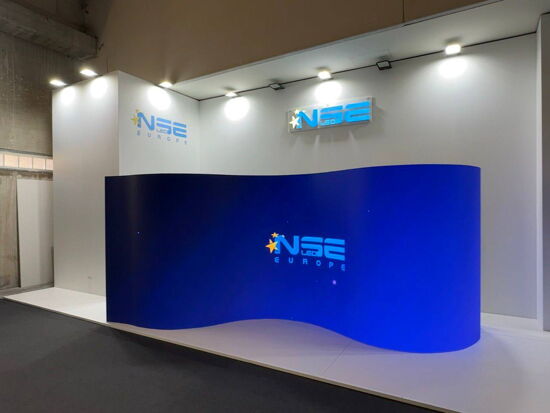Ricoh enters DTG market with two new machines
Ricoh has launched two new direct-to-garment (DTG) printers during FESPA 2017 and secured its first sale at the exhibition.
Ricoh moved into the DTG space when it acquired direct-to-garment printer manufacturer AnaJet in early 2016. The new machines are manufactured at AnaJet’s California headquarters.
The two new machines, the Ricoh Ri 3000 and Ri 6000, are based on the Anajet mPower series, but with a number of enhancements. They will be commercially available from Q3 of this year, with price yet to be set.
AnaJet international technical support specialist Marica Mody highlighted a variety of improvements on the previous AnaJet series, including an upgraded ink circulation system for white channels to improve ink flow and increase performance.
Mody said: “Screen printing, sublimation, transfer papers are huge markets that are successful, but none of them can do what DTG can do.”
The two new machines both have a printable area of 350x450mm but the Ri 3000 uses three Ricoh MH 2420 inkjet heads and the Ri 6000 uses six. In terms of speed, at 600dpi the Ri 6000 can print a 300x250mm area on a light garment in around 27 seconds, while the Ri 3000 takes 51 seconds. Both machines use AnaJet’s AnaRip software.
The machines also use AnaJet’s DTG water-based pigment inks, running CMYK plus double white. They can print on a wide variety of garment types, including t-shirts, cloth bags, hoodies, sweatshirts and socks, on materials ranging from 100% cotton and 100% light polyester to mixed garments up to 50/50 blends.
Carsten Gaarde, print shop manager of Denmark-based Jyske Bank, purchased an Ri 6000 on day 3 of FESPA 2017, which took place from 8-12 May at the Hamburg Messe. Jyske already runs five Ricoh devices, including three Ricoh Pro C9110s, in its in-house print shop.
The machine will be installed in the early autumn and will be supplied by Danish Ricoh reseller X & Co. It will mainly be used for runs of between 10 and 50 personalised t-shirts for in-house events, while Gaarde will still contract out work for longer-run t-shirt jobs.
Gaarde said: “We have a lot of different venues and this particular printer fits in in the way that if we have something in the evening we could have 10 t-shirts with names on or something."
“This is the first time I’ve seen this and the quality is way better than I’ve seen before. It’s small, easy to use, good for short runs and individual t-shirts.”
Miss any of the action from FESPA 2017? Catch up here with full show coverage.
Topics
Interested in joining our community?
Enquire today about joining your local FESPA Association or FESPA Direct
Recent news
.png?width=550)
Why are FESPA events the ideal place for visionaries to meet? With Harold Klaren from EFKA
We speak to Harold Klaren, International Sales Manager at EFKA about visionaries in print. Harold shares why he believes FESPA events are the ideal place for visionareis to meet.

NSELED to showcase Innovation and transformation at European Sign Expo 2025
NSELED Europe, part of leading LED display technology provider NSE, will welcome visitors to its stand at the European Sign Expo 2025. Ahead of the event, we speak with Daniele Rocca, principal chief executive officer at NSELED Europe, about what to expect from the company as the official ‘Digital Screen Partner’ of the event.

Why the Future of Print Is Personal – and What That Means for Your Business
Minna Philipson, CMO at Gelato shares how the future of print is personal, driven by demands for tailored, localised, and on-demand products. Businesses must adapt, embracing software to streamline operations and building customer-centric brands. Personalisation is key to connection, requiring emotional storytelling and flexible operations to thrive in the evolving market.

The latest sustainable solutions in non-digital signage
While by no means a new concept in the market, sustainability is becoming an increasingly important part of daily life for sign-making businesses. Here, Rob Fletcher shares some of the non-digital materials to help companies become more planet friendly.